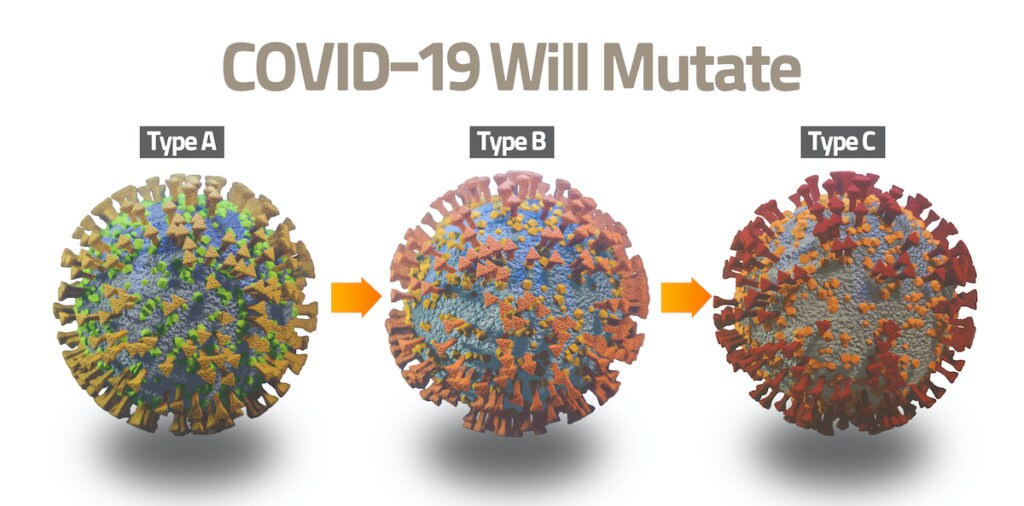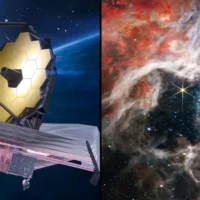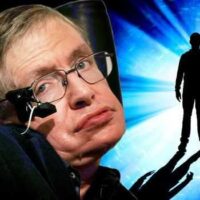Imagine a world where every element, from the tiniest particle to the vast expanse of the cosmos, follows a hidden set of rules. These rules, governing everything from genetic mutations to the fundamental structure of the universe, might suggest that our reality is not what it seems. Dr. Melvin Vopson, a physicist delving into the mysteries of the SARS-CoV-2 virus, believes he has uncovered evidence of such a rule: the second law of infodynamics.
This groundbreaking idea not only challenges our understanding of entropy but also hints at the possibility that we are living in a meticulously crafted simulation. Could this new law of physics redefine our perception of evolution and the very fabric of existence?
The Basis of the Study

Dr. Melvin Vopson’s study delves into the intriguing concept of information entropy, which differs from traditional physical entropy. Physical entropy measures the disorder within a system’s physical states, whereas information entropy pertains to the arrangement and complexity of information within those states.
Vopson applied this principle to the SARS-CoV-2 virus, analyzing its mutations through an information entropy lens. He explained, “The physical entropy of a given system is a measure of all its possible physical microstates compatible with the macrostate…the additional entropy associated with them is called the entropy of information.”
Unlike physical entropy, which tends to increase, Vopson observed that information entropy in the virus decreased over time. This finding led him to propose the second law of info-dynamics, suggesting that information entropy must remain constant or decrease, offering a fresh perspective on how information evolves within physical systems.
Evidence from SARS-CoV-2 Mutations
Dr. Melvin Vopson’s research into the SARS-CoV-2 virus focuses on the concept of information entropy, which measures the complexity and information content within a system. Unlike traditional physical entropy, which increases over time, Vopson observed that information entropy in the SARS-CoV-2 virus decreased as it mutated during the COVID-19 pandemic. This finding suggests a new law of physics, termed the “second law of info dynamics,” which posits that information entropy must either remain constant or decrease over time.
Vopson studied the RNA sequences of the virus, which have been extensively documented throughout the pandemic to track its evolution and develop vaccines. He noted, “The best example of something that undergoes a number of mutations in a short space of time is a virus. The pandemic has given us the ideal test sample as SARS-CoV-2 mutated into so many variants and the data available is unbelievable”.
This decrease in information entropy implies that genetic mutations may not be entirely random, challenging the conventional understanding of evolutionary biology. Vopson points to historical data, such as a 1972 experiment where a virus’s genome unexpectedly reduced over 74 generations, as supporting evidence for his theory.
If confirmed, this theory could revolutionize fields such as genetic therapies, the pharmaceutical industry, and pandemic research by enabling predictions of beneficial mutations before they occur. This deterministic view of genetic mutations opens up new possibilities for understanding and manipulating biological processes.
Implications of the Second Law of Infodynamics
Dr. Melvin Vopson’s discovery of the second law of infodynamics extends far beyond the realm of virology, potentially revolutionizing various scientific fields. This new law suggests that information entropy, unlike physical entropy, tends to decrease over time, which has profound implications for genetics, cosmology, and even the fundamental understanding of the universe.
Vopson’s theory posits that genetic mutations are not entirely random. Instead, they follow a deterministic process that minimizes information entropy. This challenges the traditional Darwinian view that mutations occur randomly and are then subject to natural selection. By understanding this new perspective, scientists could predict genetic mutations, offering groundbreaking applications in genetic therapies, evolutionary biology, and the pharmaceutical industry.
Moreover, the second law of infodynamics could explain the prevalence of symmetry in the universe. Vopson argues that high symmetry corresponds to low information entropy states, which the universe naturally strives to achieve. This insight provides a fresh understanding of why symmetry dominates at both macroscopic and microscopic levels.
In the realm of cosmology, this law helps to address how the universe maintains a balance despite the constant increase in physical entropy. Vopson suggests that information entropy serves as a counterbalance, preserving the overall stability of the universe. This theory also feeds into the simulation hypothesis, proposing that our universe could be a highly optimized and compressed digital construct.

Controversial Claims and the Simulation Hypothesis
Dr. Vopson’s second law of infodynamics has led him to a bold hypothesis: that our universe might be a simulated construct. He suggests that the minimization of information entropy is akin to data optimization and compression in digital systems, a necessity for running a complex simulation efficiently. According to Vopson, “A super complex universe like ours, if it were a simulation, would require built-in data optimization and compression… This is exactly what we are observing all around us”.
Symmetry and Information Entropy
One of the most intriguing aspects of Vopson’s theory is its explanation for the pervasive symmetry in the universe. He posits that high symmetry states correspond to low information entropy, which the second law of infodynamics mandates. This insight helps explain why symmetrical structures are so common in both nature and physics: “A high symmetry corresponds to a low information entropy state, which is exactly what the second law of info dynamics requires”.
Implications for Evolution
The deterministic nature of genetic mutations proposed by Vopson’s theory directly challenges the conventional view of evolution. He suggests that mutations are guided by a process that reduces information entropy, implying a predictable pattern rather than random occurrences. “The COVID data confirms the second law of infodynamics and the research opens up unlimited possibilities… Imagine looking at a particular genome and judging whether a mutation is beneficial before it happens”.
Testing the Hypothesis
Dr. Vopson has proposed several experimental methods to validate his second law of infodynamics and its implications. One key experiment involves measuring the mass of a hard drive before and after the irreversible erasure of information. If information has mass, as Vopson theorizes, the hard drive should show a slight decrease in mass post-erasure. This experiment, although currently beyond our precise capabilities, presents a tangible approach to test the theory.
Particle-Antiparticle Annihilation
Another proposed experiment involves studying the annihilation of particles and antiparticles. When these particles collide, they annihilate each other, releasing energy in the form of photons. Vopson predicts that the properties of these photons can provide evidence of the information carried by the particles. “The experiment involves erasing the information contained inside elementary particles by letting them and their antiparticles annihilate in a flash of energy,” Vopson explains, which he believes could reveal the informational content inherent in matter.
Real-World Implications
Validating the second law of infodynamics could have profound implications across various fields. For instance, proving that information has mass could revolutionize data storage technologies and quantum computing. Additionally, understanding the deterministic nature of genetic mutations could lead to advancements in genetic therapies and predictive medicine, offering new ways to combat diseases before they manifest.
Practical Applications and Future Research
The potential applications of Dr. Melvin Vopson’s second law of infodynamics are vast and promising. By suggesting that information entropy decreases over time, this theory could transform fields such as genetics, where predicting mutations before they occur could revolutionize genetic therapies and the pharmaceutical industry. “Imagine looking at a particular genome and judging whether a mutation is beneficial before it happens,” Vopson states, highlighting the transformative potential of this research.
Moreover, the theory’s implications for data storage and computing are profound. If information indeed has mass, this could lead to new methods of data optimization and storage, enhancing the efficiency of digital systems. This concept aligns with Vopson’s idea that the universe, if a simulation, requires built-in data optimization and compression to function efficiently.
Future research will focus on validating these groundbreaking claims through experimental evidence. Key experiments, such as measuring mass changes in hard drives and studying particle-antiparticle annihilation, aim to provide empirical support for the second law of infodynamics. The results of these experiments could either confirm or refute the theory, pushing the boundaries of our understanding of physics and the nature of the universe.
The journey to validate the second law of infodynamics is just beginning, with significant implications for science and technology. As research progresses, it promises to offer new insights into the fundamental processes governing our reality and potentially unlock revolutionary advancements in various scientific domains.
Exploring the Boundaries of Reality: Are We Living in a Simulation?

Dr. Melvin Vopson’s research on the SARS-CoV-2 virus and the second law of infodynamics offers a fascinating new perspective on the nature of our universe. By proposing that information entropy decreases over time, Vopson challenges traditional views on genetic mutations and evolutionary biology, suggesting a deterministic process that could revolutionize genetic research and therapies.
Moreover, the implications of this theory extend to cosmology and the simulation hypothesis, where the universe’s high symmetry and data optimization might indicate a complex, simulated construct. While these bold claims require rigorous experimental validation, the proposed tests on information mass and particle-antiparticle annihilation provide tangible steps toward confirming or refuting the second law of infodynamics.
As research continues, Vopson’s theory promises to push the boundaries of our understanding of information, entropy, and the fundamental structure of reality. Whether or not we are living in a simulation, the journey to uncover the truths behind these concepts will undoubtedly lead to significant scientific and technological advancements.




